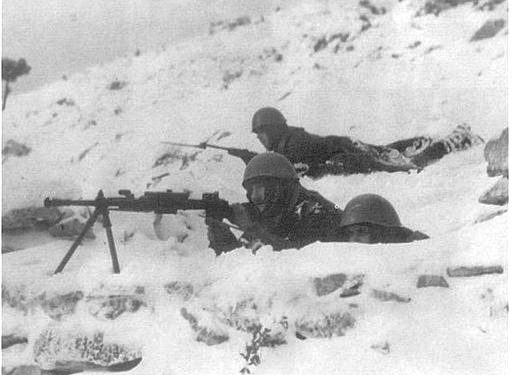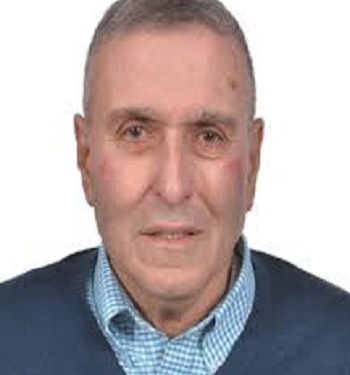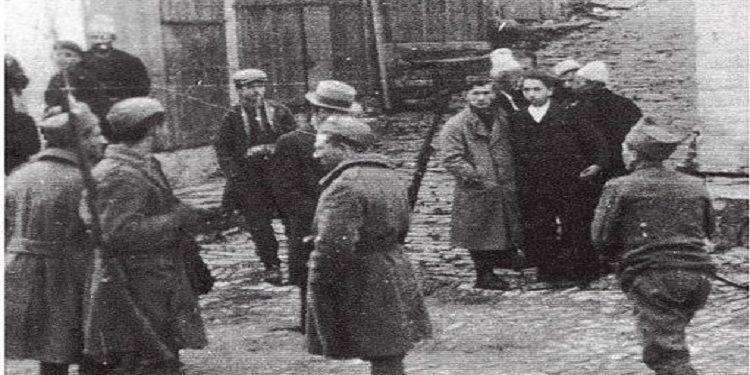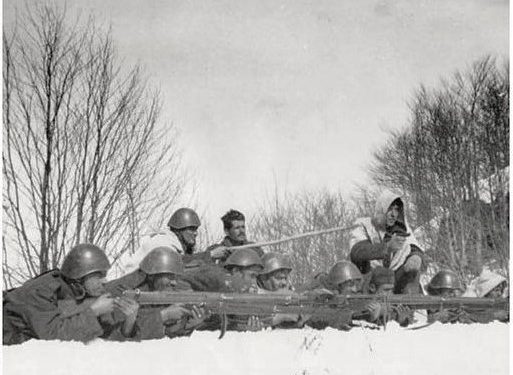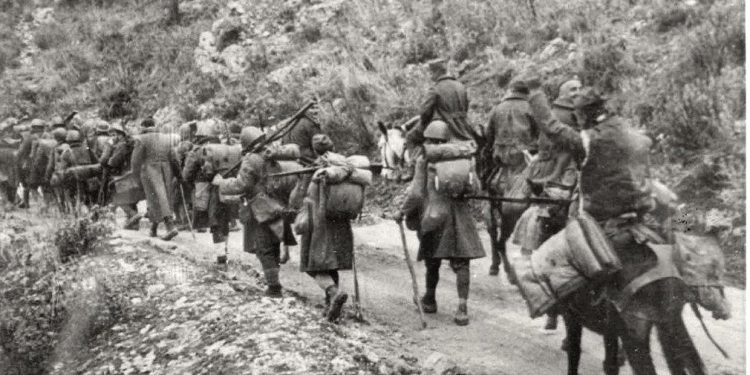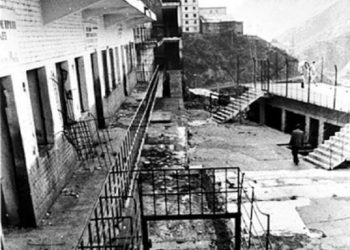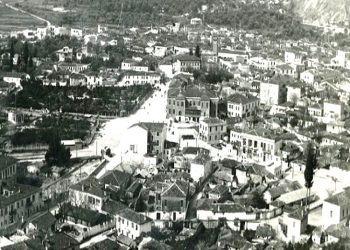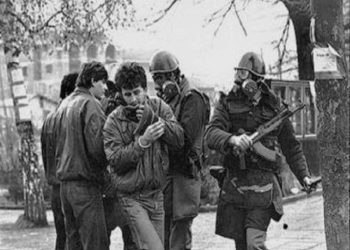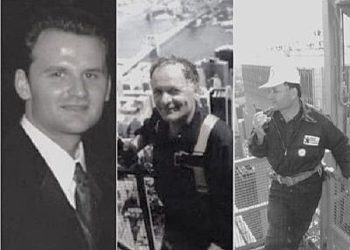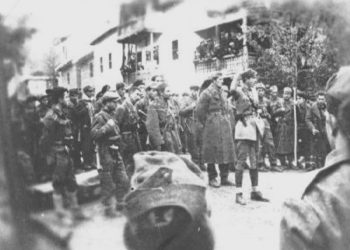By Prof. Dr. Bardhyl Çipi
Part sixteen
SCIENTIFIC EVIDENCE OF STRIKING DEATHS
(Public figures, victims of the dictatorship, other events)
Memorie.al / Bardhyl Çipi, one of the most experienced specialists in our country in the field of Forensic Medicine and Bioethics, their teaching, and the training of young forensic experts. Some of his patients include: victims who were killed on the border while trying to escape the communist dictatorship, but whose hidden corpse was discovered with the help of his loyal dog; the interned woman who committed suicide out of despair; Kosovan citizens killed by Serbs because they sought to live free, not to be humiliated and tortured by them; residents who lived 1500 years ago in Albania; the University of Tirana professor who was robbed and murdered; etc. A book on death and the scientific evidence for discovering its different types: murder, suicide, cases stimulated and forced by the communist regime, murders and genocides against Albanians by their neighbors, fresh or decomposed and skeletonized corpses. Documents of the deaths of prominent figures: Kennedy, Lincoln, Napoleon, Lenin, Trotsky, etc., and other events involving the deaths of ordinary people. Knowledge about post-mortem changes and the examination of corpses in the world and in our country, from a historical, ethical, forensic, and legal perspective. Some of his recent books are: “Manuali i Mjekësisë Ligjore” (Forensic Medicine Manual) (2015), “Bioethics in Albania nowadays” (2016), “Tranzicioni shqiptar në lupën e mjekësisë ligjore” (The Albanian Transition through the Lens of Forensic Medicine) (2018), “Mjekësia Ligjore Kriminalistika” (Forensic Medicine Criminalistics) (2020).
Scientific Arguments for the Greek Soldiers’ Cemeteries in Albania to be transferred to Greece (Forensic Anthropological Analysis and According to International Legislation)
In the examination of human remains for various purposes-forensic, historical, anthropological, archaeological, etc.-adhering to a set of ethical rules and principles is crucial.
These are described in detail in contemporary forensic medicine and forensic osteology literature and have been applied by us in all identification examinations of human remains in our country, including criminal cases, the discovery of victims of the communist regime, or any special case of the remains of an Italian soldier killed in the Italo-Greek War of 1940–1941.
Recently in Albania, exhumations of previously undiscovered corpses of Greek soldiers killed in the Italo-Greek War of 1940–1941 have been carried out. These actions were supported by an agreement between the governments of Greece and Albania, accompanied by the creation of a joint commission, followed by identification inspections by several Greek medical specialists, as well as forensic doctors from the Institute of Forensic Medicine in Tirana.
The Ethics of Forensic Anthropological Osteology in the Examinations of the Remains of Greek Soldiers from the Italo-Greek War 1940–1941
The discovery of unknown graves and the identification of the remains of Greek soldiers killed in Albania during the Italo-Greek War of 1940–1941 undoubtedly belong to the science of forensic anthropological osteology, where a series of ethical principles detailed in the relevant contemporary literature must also be respected. We have taken these ethical rules into account during our prolonged practice of these types of examinations.
What are these ethical aspects, and have they been considered in these bone remains identifications, which are led by Greek forensic doctors or other foreign specialists appointed by them?
As is known, ethics generally examines rules of conduct, which, in the case of forensic anthropological osteology, must be respected during these bone examinations.
But one must not forget that forensic human osteology experts, while performing their activity, are usually under severe media pressure, within a specific legal, political, social, and economic framework, where the data from their inspections can be misinterpreted or distorted. Therefore, their work must be guided primarily by scientific data, avoiding speculation, superstitions, or political or economic interests.
Furthermore, the forensic osteology doctor must avoid exceeding his knowledge, which could lead to incorrect results. That is, he must perform these assessments-regarding the determination of the human origin of the bones, age, sex, stature, race, and individual identification-within the limits of this knowledge, supporting the discipline he represents.
He must also highlight the limitations and inaccuracies of the methods he has used. Otherwise, he may reach incorrect conclusions.
The literature mentions the conflict in Southeast Asia, accompanied by the deaths of hundreds of thousands of people, including many American servicemen. Of these, the victims who were not returned or could not be found were considered as “missing in action” (MIA).
In 1972, an American helicopter ‘AC-130′ crashed in Laos, and the 13 American servicemen traveling on it were declared missing in action. Ten years later, an excavation of the crash site revealed 50,000 bone fragments, the largest of which was 13 cm long, and the majority was about 1 cm in size.
After the forensic osteological examination, based only on the anatomical description of the bones, the positive identification of the skeletal remains of the 13 victims was announced, and they were sent to the families for burial.
But the victims’ relatives contested the results of this identification. For this reason, a new examination was carried out by another team of specialists, which proved that the conclusions of the first expertise regarding the age, sex, and race of the victims were erroneous because they had been made by exceeding the limits of their competence.
Thus, the lack of knowledge and the inaccuracy of the methods used can lead to a violation of the principle of impartiality, which must characterize the forensic osteology specialist.
In addition, these specialists must be independent in their work, meaning they should not belong to the conflicting parties in the cases they examine.
In the recent examinations for the identification of the remains of Greek soldiers killed in the Italo-Greek War of 1940–1941, there are strong doubts that these ethical principles have not been properly respected.
Thus, carrying them out under the direction of Greek specialists, who have an interest in identifying as quickly and as many of their killed compatriots as possible in this war, may have influenced the non-application of the principle of impartiality.
This suspicion is further increased by the fact that the bones from the village of Kosinë in the Përmet district were included in these inspections at the beginning. These remains, examined many years ago by two of our country’s most experienced forensic experts, which were alleged to be those of Greek soldiers killed in the Italo-Greek War of 1940–1941, turned out to belong mainly to Albanian women and children. Thus, a real scandal.
It is very likely that the Greek specialists have been overly influenced by political interests regarding Greek claims toward our country, which may have led to the exceeding of their scientific competencies and the disregard of the principle of impartiality. For these reasons, the possibility that these were accompanied by incorrect identifications in these cases is not excluded.
Their initial haste to bury these remains as quickly as possible in the cemeteries already built in Albania also testified to this.
Even regarding DNA analysis, which the Greek side has stated was used during these examinations, opinions are often given by some of the most prominent specialists in forensic anthropology that this method often gives the victims’ families unfounded hopes, which leads to the avoidance of using other scientific identification methods.
Furthermore, the DNA method can be accompanied by numerous laboratory errors from eventual contamination, the use of inadequate standards, and the mixing up of samples. For this reason, in these circumstances, traditional identification methods would be mandatory.
In our long-standing practice of forensic anthropology, we have inspected dozens of cases of criminal matters, identifications of victims of the communist regime, civil cases of cemetery transfer, including cases of identifying the remains of martyrs of the National Liberation War, or even some Italian servicemen killed in the Italo-Greek War of 1940–1941.
For each of these countless forensic anthropological expertise’s, we have worked for a very long time-weeks and months-performing countless anthropological inspections and measurements for the numerous determinations made in these cases, including bone damage from being alive or post-mortem, etc.
Regarding the actions currently being carried out for the remains of Greek soldiers killed in the Italo-Greek War of 1940–1941, we have no knowledge of whether or not these detailed anthropological examinations were performed, a suspicion that is further increased by the Greek side’s initial haste for the quickest possible burial of these remains on Albanian soil.
Thus, a lack of transparency is noted on the part of the Greek side in its actions, which has prevented a peer review (evaluation of the work by one or more other specialists with similar competence to the one who performed the work), thereby hindering the establishment of a public standard for these examinations.
Furthermore, this agreement between Albania and Greece is not proper because the exhumations being carried out pertain to the Italo-Greek War of 1940–1941. The Greek soldiers were killed in clashes or battles with Italian soldiers. Therefore, the inclusion of the Italian side in this agreement was mandatory.
We believe that for these cases, a new re-examination should be carried out by independent specialists, appointed by an international organization dealing with these issues, such as the ICRC (International Committee of the Red Cross), which was involved as a neutral intermediary between the warring parties in the conflict between Israel and Hezbollah in July 2008.
Only by strictly applying the ethical principles of Forensic Anthropological Osteology will this science manage to fulfill its main mission, for which one researcher states: “bones are often our last and best witnesses, they never lie, and they never forget.”
In this way, the fairest humanitarian assessment of the remains of the Greek soldiers killed in the 1940–1941 war will be made, simultaneously respecting the feelings of the relatives and the Greek people towards them.
Reasons for Not Allowing the Burial of Greek Soldiers’ Remains in Albania
The issue of the burial sites for the remains of soldiers killed in various wars is widely discussed today because honoring fallen service members deeply affects the people who visit the monuments and memorial cemeteries where their remains rest.
Today, there are many such memorials and cemeteries worldwide that honor the fallen. Conversely, disrespect for those killed in military battles creates feelings of despair among the peoples of different countries.
For this, there is also rich international legislation, foremost of which are the Geneva Conventions (GC) and their Additional Protocols.
According to them, countries in conflict must strive to facilitate the return of the remains of the killed upon the request of the party to which they belong or the victims’ relatives.
In fact, during the drafting of GC I and GC II, some delegations requested that the possibility of transferring bodies to their countries not be mentioned, as they wanted their fighters to be buried in the theater of war where they had fallen.
Others even sought to find a substantial reason for the deceased to be buried in the place where they were killed. To establish a balance between these opposing views, this issue was left optional.
But GC III and GC IV mention only the option of returning the remains to their country. Thus, for example, in recent years, the remains of soldiers from North Korea killed in the Korean War in 1950, or the remains of unknown American soldiers killed in France in World War II, are being returned to the United States.
Therefore, the general tendency today, based on this legislation, is for these mortal remains to be transferred to their country of origin. For this reason, the interstate agreement between Albania and Greece, which grants the Greek state the right to build collective cemeteries on Albanian soil, is very unfair, to the detriment of our country’s sovereignty and dignity.
As mentioned above, during the drafting of the Geneva Convention, the construction of cemeteries for the soldiers of another country in the place where they were killed was required to have a substantial reason. In the case of the Greek soldiers of the 1940–1941 war, this reason, for the Greek side, would be precisely for these cemeteries to serve in the future as support points for Greek claims over the southern part of Albania.
This was also proven by the incident at the Greek cemeteries in the village of Bularat, Albania, a few years ago, where Greek extremists managed to carry out an armed assault against the Albanian police, using “honoring the fallen soldiers” as a pretext.
The main historical arguments that oppose the construction of these Greek collective cemeteries in our country are several:
-The Greek army entered Albanian territory during the Italo-Greek War of 1940–1941 to occupy the southern part of our country, because Greece has always previously aimed to annex the South of Albania, the so-called “Vorio Epirus.” Therefore, these Greek soldiers fallen in this war have no moral right to rest on Albanian soil. Conversely, their graves could turn into pilgrimage sites in Albania for Greek supporters of “Vorio Epirus” in the future.
-Furthermore, it is not known whether these killed Greek soldiers expressed a wish before their death to rest in Albania, or in its absence, whether this wish was expressed by their families.
-In addition, in this interstate agreement, one of the main principles of relations between sovereign countries has not been applied: reciprocity. According to this principle, in this case, cemeteries for Albanian soldiers killed in the same war should also be opened on Greek soil, especially in its northern part, or, in their absence, for the Çam population massacred and killed by the Greeks during that time period, during the ethnic cleansing from their homelands.
Therefore, the agreement between our states regarding these cemeteries must be revoked by our state as soon as possible, as happened in Estonia, where, based on a government decision, the cemeteries of Russian soldiers who fell there in the war against Nazi Germany were dismantled because, for the Estonian people, the liberation of their country from fascism by Soviet soldiers was considered the beginning of a new occupation.
Only in this way will it be possible for the bone remains from these Greek cemeteries, after a new examination by an impartial team, to be sent for burial with the corresponding honors and respect in their country in Greece, which would undoubtedly positively influence our country’s relations with Greece. Memorie.al




